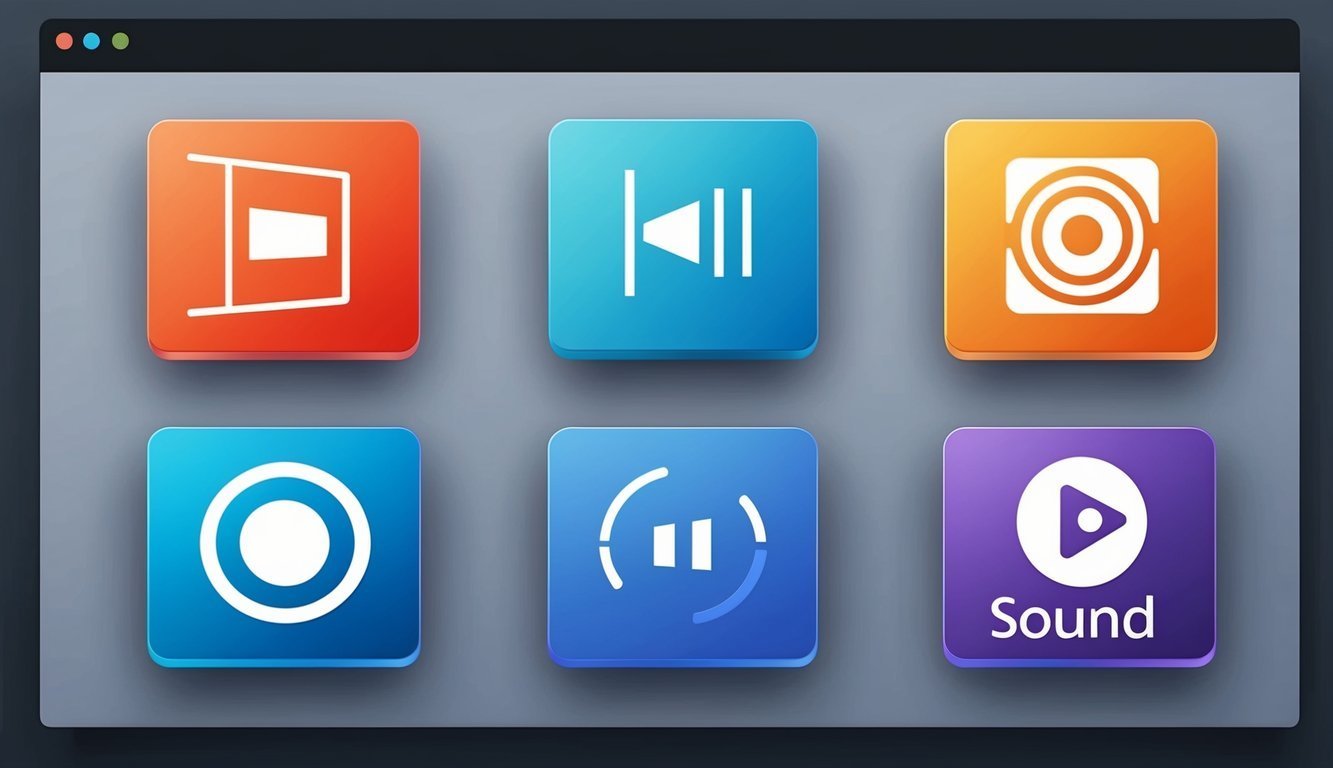Sound design is the heartbeat of many creative industries.
It molds the audio experience we enjoy in movies, video games, music, and beyond.
As technology advances, our toolkit for creating unique sounds just keeps expanding!
alt=”Five sound design program icons arranged in a grid on a computer screen, with each program’s logo clearly visible”>
Picking the right software can truly elevate your sound design work.
The best sound design programs come loaded with features like advanced editing options, extensive sample libraries, and user-friendly interfaces.
These tools are designed to make your life easier while opening up a world of creativity.
Much like the top furniture design programs that let you customize every inch, the best sound design software gives you the precision to fine-tune your audio exactly how you want it.
Investing in quality software means you’ll have the flexibility to fully realize your creative vision.
Let’s check out five popular options that both pros and hobbyists swear by for crafting amazing audio.
1) Ableton Live
Ableton Live is a crowd favorite among sound designers and music producers.
It’s famous for its unique workflow, allowing you to create and perform music on the fly—talk about exciting!
There are two main views in Ableton: Session and Arrangement.
The Session view is your playground for experimenting with loops and ideas, while the Arrangement view helps you lay out your tracks like a pro.
When it comes to sound design and electronic music production, Ableton is a powerhouse.
Its built-in instruments and effects are incredible tools for sculpting distinct sounds.
Plus, it works seamlessly with hardware.
Connect MIDI controllers and synthesizers easily, giving you even more avenues to explore creatively.
Ableton comes in different versions, catering to different needs.
If you’re just starting out, the Intro version might be all you need, while the Suite version packs in all the bells and whistles.
Learning the ropes of Ableton might take a bit, but trust me, it’s worth it! Its flexibility is why it’s beloved by both pros and hobbyists alike.
2) Avid Pro Tools
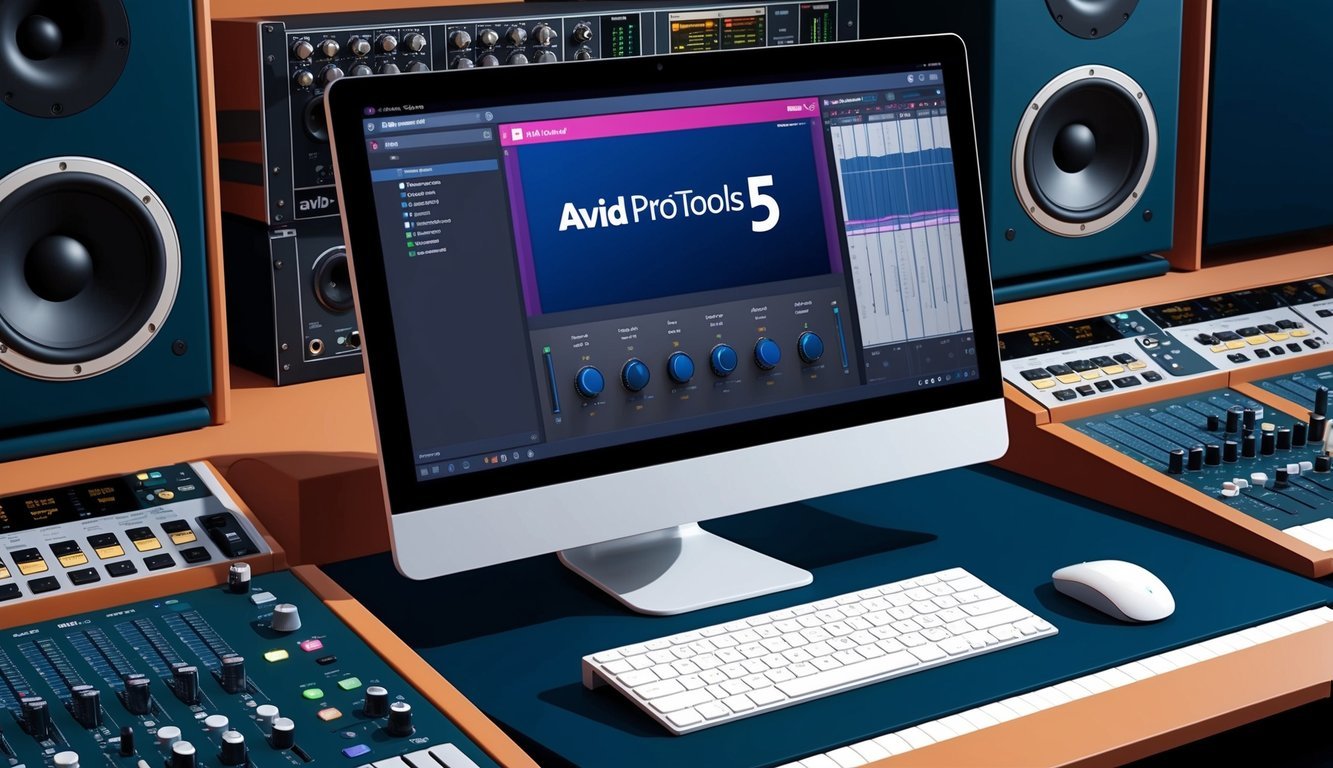
Avid Pro Tools is like the gold standard in the sound design universe.
If you’re into audio production, you’ve probably heard a lot about it.
This powerhouse has been a staple in professional studios for ages.
Pro Tools lets you record, edit, and mix audio with unmatched precision.
You can juggle up to 512 tracks at once, which is pretty impressive when you’re building intricate soundscapes.
One of Pro Tools’ standout features is its editing tools.
They’re incredibly accurate, allowing you to fine-tune your audio until it’s pitch-perfect.
It’s also fantastic for capturing live instruments and vocals.
Working with video? No problem! Pro Tools plays nicely with video tracks, making it an excellent choice for film and TV sound design.
But here’s the catch: Pro Tools isn’t the easiest to master.
There’s a lot under the hood, so be prepared to invest some time learning.
If you’re serious about sound design, though, diving into Pro Tools is a smart move.
It’s an industry standard for a reason! Just be ready to roll up your sleeves.
3) FL Studio
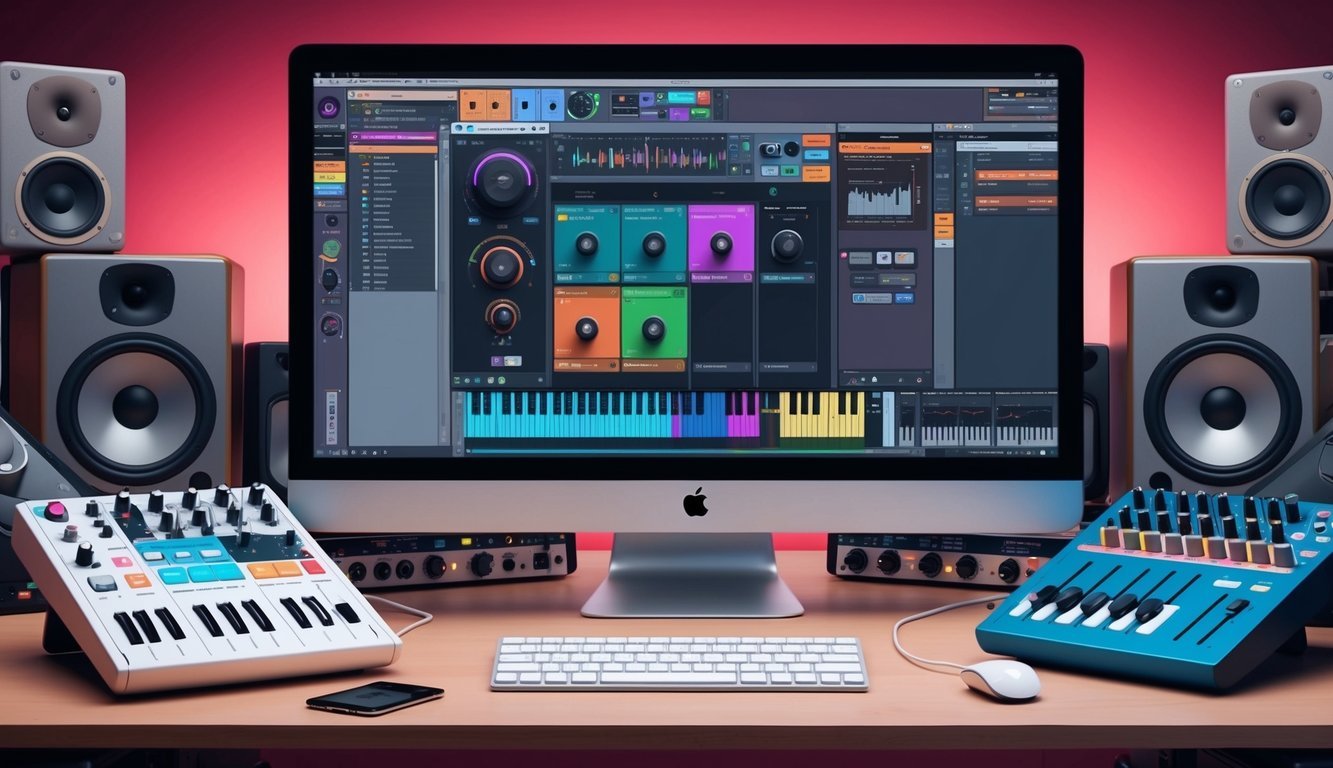
FL Studio is a crowd-pleaser for beginners and seasoned pros alike.
It packs a punch with over 100 built-in instruments and effects, along with a massive sound library.
One of my favorite features? Lifetime free updates.
Yep, you buy it once and you’re good to go for life—no more dishing out cash for every new version.
What a score!
If you’re hesitant, FL Studio even offers a free demo version.
It’s a fantastic way to dip your toes in and see if it suits your style.
With different Editions available, you can choose one that fits your needs and budget.
It’s super beginner-friendly, making it easy to start creating music right away.
In sound design, FL Studio really shines.
It’s particularly adored by electronic music producers, but it’s versatile enough for all genres.
4) Logic Pro X
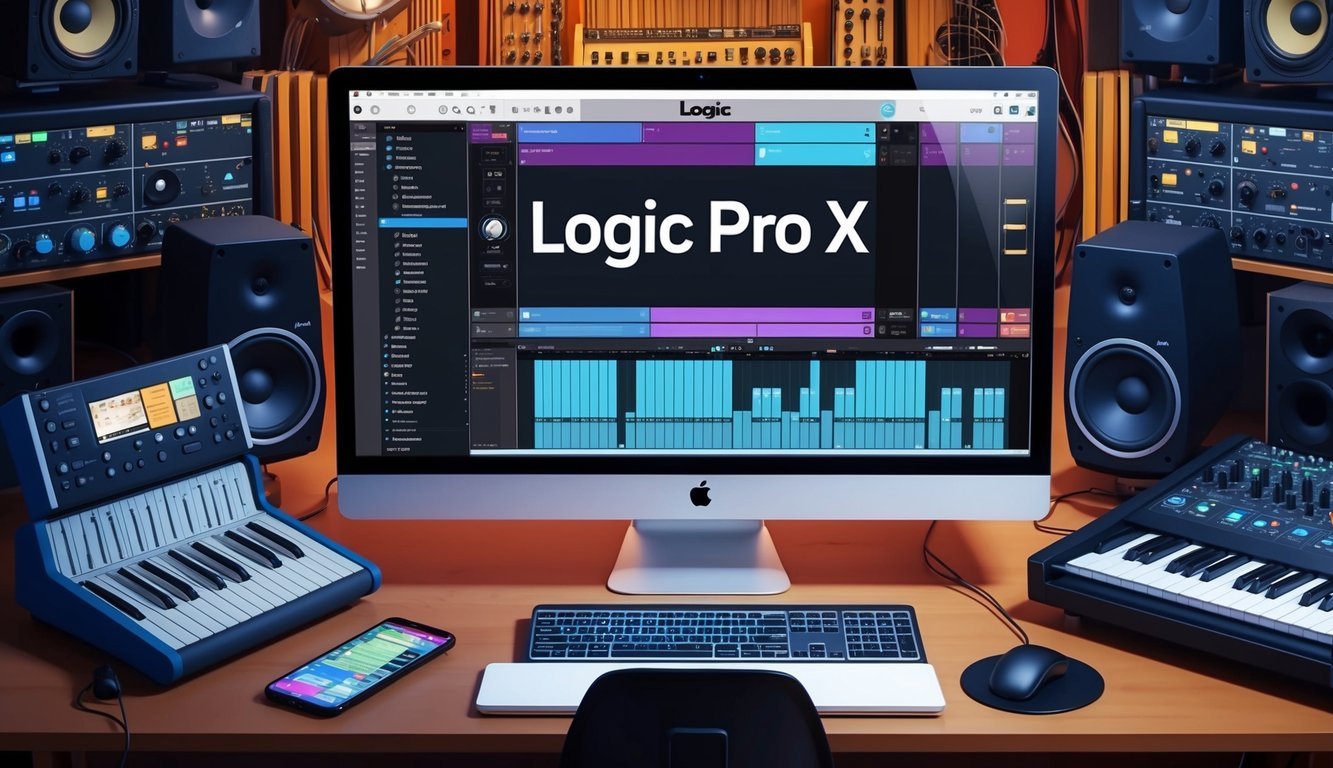
Logic Pro X is a go-to for Mac users making music.
It’s brimming with features designed to help you produce stunning tunes without the hassle.
You’ll find an impressive collection of virtual instruments and effects, allowing you to enrich your tracks without needing any physical instruments.
The interface is pretty straightforward.
You can drag and drop audio files, tweak settings with sliders, and have a clear overview of your entire project.
Logic Pro X is stellar for recording and editing audio.
Whether you need to fix mistakes or add effects, it’s designed to make your recordings sound top-notch.
One feature I love is its MIDI editing tools, which make it a breeze to create and adjust melodies or drum patterns.
If you have other Apple devices like an iPad, you can even use them as an extra control surface.
Sure, it might not be the most budget-friendly option, but many users swear it’s worth every penny!
5) Steinberg Cubase
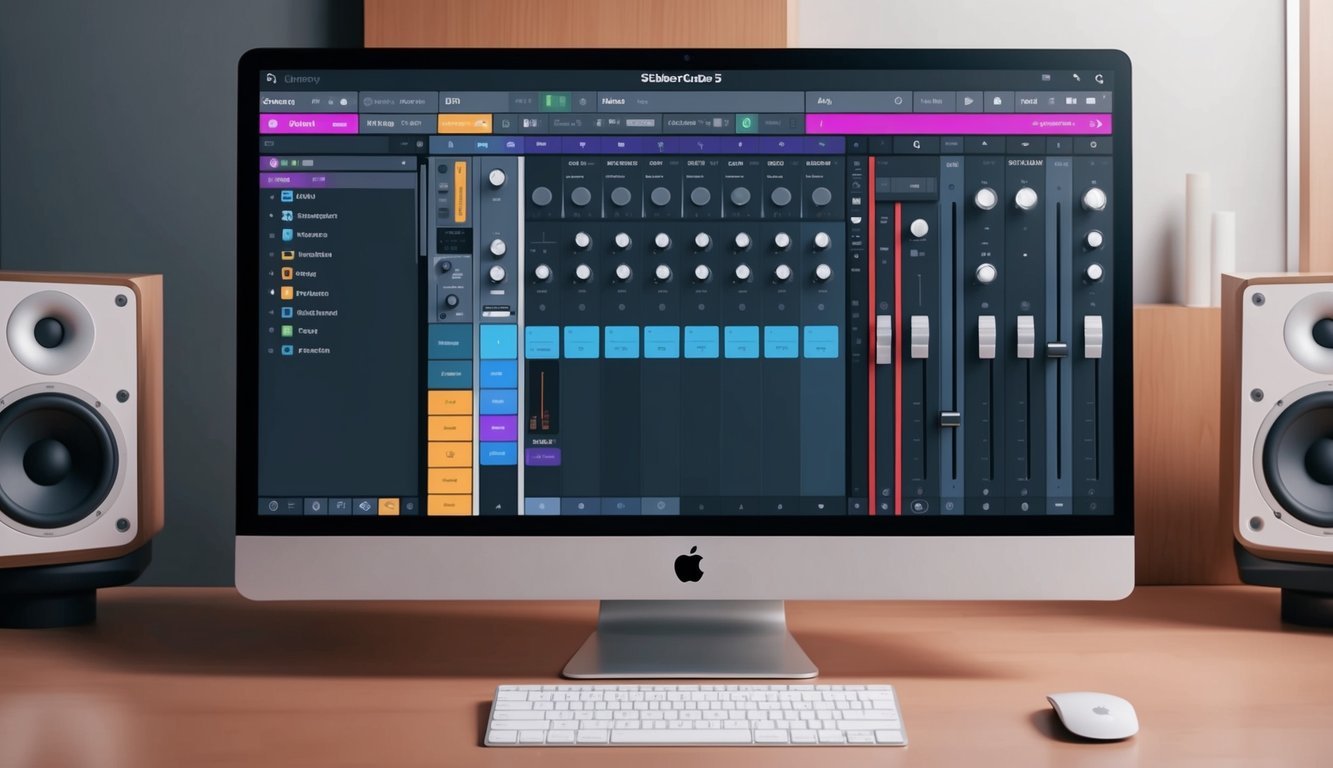
Steinberg Cubase is another heavy hitter in the sound design realm.
It’s been tried and true for years and continues to evolve with each new version.
If you’re into scoring for films or TV, you’ll probably fall in love with Cubase.
It’s a favorite among film composers, including legends like Hans Zimmer.
The software comes packed with awesome features.
It boasts a 64-bit audio engine that delivers crystal-clear sounds.
Plus, its MIDI tools make managing multiple instruments a breeze.
One exciting feature is its 5.1 surround sound capability.
This makes it easy to create immersive audio experiences that can truly wow your audience.
The interface might take a little time to get used to, but once you do, you’ll be cruising through your projects.
Cubase is versatile enough for any kind of music, from classical to electronic.
If you’re just starting, don’t stress! Cubase offers different versions to meet your needs and budget; you can gradually upgrade as your skills grow.
Importance of Sound Design in Modern Media
Sound design is everywhere in our movies, TV shows, and games nowadays.
It’s what brings stories to life and connects us to the action on screen.
Let’s break down how it works across different media.
Enhancing Storytelling and Immersion
Sound design is like the seasoning that makes a meal pop.
It pulls you right into the action.
In films, sound effects create tension and set the emotional tone.
Think about those eerie sounds in horror flicks that cause you to jump out of your seat!
Good sound design can make you feel like you’re genuinely part of the scene.
It adds layers to what you see on the screen.
A perfect example? The silence in “A Quiet Place” that amplifies the horror when it does finally break—what a ride!
Sound designers rely on cool tools to create and mix sounds.
They’ll either record real noises or even whip up new ones.
This process helps each project shine with its unique flair.
Role in Video Games
In video games, sound design is crucial.
It informs you about what’s happening all around you.
Footsteps can signal someone’s approach, and explosions warn you of impending danger.
Sound breathes life into game worlds.
The chirping of birds, gusts of wind, or the buzz of passing cars—all those details enhance the experience, making gameplay more engaging.
Sound designers in gaming often work alongside large teams, crafting everything from character voices to background scores, creating an immersive world that keeps you hooked.
Great sound can even give you a competitive edge.
In shooting games, hearing where shots come from can make all the difference between victory and defeat—it’s about more than style; sound directly impacts gameplay!
Features to Look for in Sound Design Software

When you’re on the hunt for sound design software, keep an eye out for some essential features.
The user interface and the quality of sound libraries can really make or break your experience.
User Interface and Usability
A well-designed user interface is key for sound design software.
You want something that’s easy to navigate, not a maze! Look for software with a clean layout and customizable workspaces.
This way, you can set everything up just how you like it.
Drag-and-drop functionality is a game changer.
It simplifies moving audio clips and effects around. Keyboard shortcuts can also speed up your workflow—trust me, once you start using them, you won’t look back.
Is real-time preview of effects available? That’s a feature you definitely want; it lets you hear changes as you make them, which can save you tons of time.
A solid undo/redo function is also crucial for fearless experimentation.
Sound Library and Effects
A robust sound library can give you access to a treasure trove of materials to work with.
Seek out software that offers a wide variety of samples and loops. High-quality presets can kickstart your projects like nothing else.
Built-in effects are another must-have.
You’ll want at least a good selection of filters, equalizers, and compressors.
More advanced options like pitch correction and time-stretching can really expand your possibilities.
Check if the software supports third-party plugins too.
This capability allows you to broaden your toolkit as needed.
Some programs even offer AI-powered tools that help with noise reduction or audio cleanup—very handy!
Frequently Asked Questions
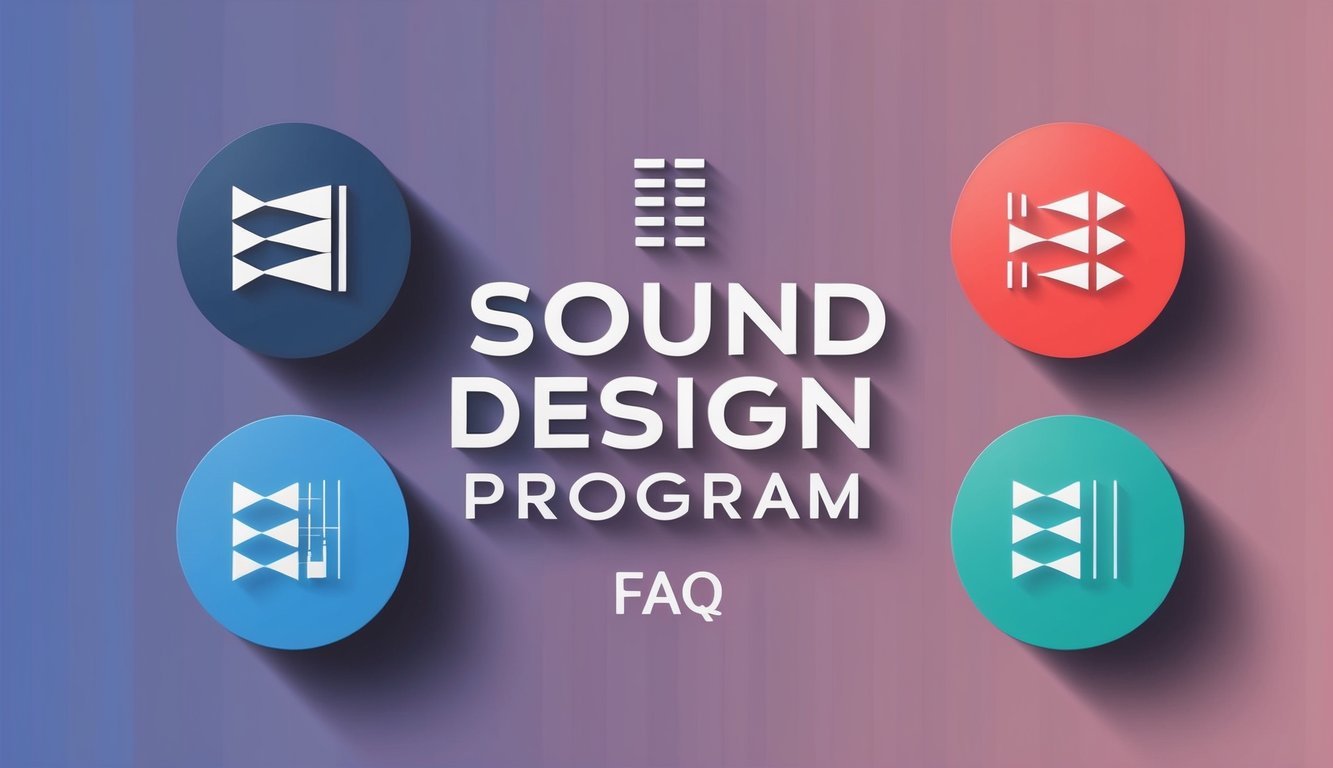
Picking the right sound design software can feel overwhelming.
Let’s tackle some common questions about popular tools, pricing, and platforms to demystify the process.
What’s the best software for newbies in sound design?
Audacity is an excellent starting point.
It’s free and offers a user-friendly interface, making it easy to record, edit, and mix audio without feeling lost.
Which sound design tools do professionals use in the film industry?
Pro Tools is the industry benchmark for film sound design.
It provides powerful editing tools and integrates seamlessly with video editing software.
Are there any standout sound design apps that won’t break the bank?
FL Studio is a budget-friendly option loaded with features, giving you a complete music production environment that doesn’t cost an arm and a leg.
Can you recommend some sound design programs suitable for game development?
Fmod is a top choice among game developers.
It allows for interactive audio creation and integrates directly into game engines.
Got any favorites for sound design on a Mac?
Logic Pro X is a leading choice for Mac users.
It’s filled with professional features and works great with other Apple products.
What’s everyone using for sound design these days that has a free version?
Reaktor 6 by Native Instruments has a free version called Reaktor Player.
You can access a variety of cool synths and effects without spending a dime.

